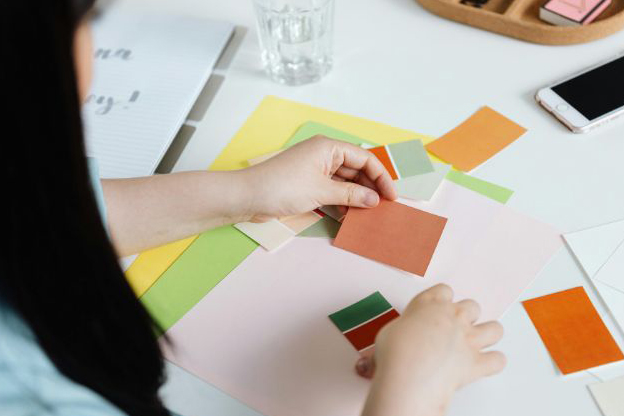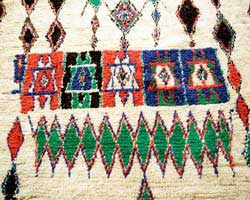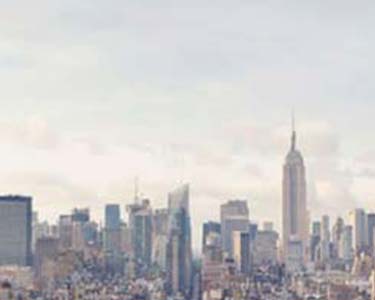Whether you are just starting on your first NYIAD Design Project or have already begun your interior design career, you'll find these cool tools helpful in your work. Several of these tools are completely described in Point.Click.Design!, NYIAD's Special Report on computer-aided design which you can now receive when you enroll in NYIAD's Complete Course in Interior Design. to read more about this exciting lesson which will help you become more knowledgeable about computers and show you the effect they are having on the interior design field. The complete 84 page lesson reviews many of the popular interior design programs on the market. If you would like to learn more about how NYIAD can teach you interior design from the comfort of your own home, click here to receive a free catalog.
Fabulous design. Cutting edge looks. Interesting twists in color, fabric, and texture. These are all elements inherent in design that's ecologically sound. Yes, your creativity can have free reign even as you make choices that help protect the planet. Increasingly, manufacturers are creating products that have minimal impact on the environment, whether because they're made from organically-grown cotton or because they're made with renewable resources. We think environmentally friendly design is so important that we recently added a Green Design lesson to the NYIAD Complete Course in Interior Design.
In our "Decorating Green" column we'll look at a sustainable, low-impact element of design in each issue of "Designer Monthly." We hope these articles will help us all help the planet and the many creatures that share it with us.
Mexico, as you've read in this special issue, is known for a lot of great stuff, especially regarding design. But recycling has not been one of that country's strengths, as a drive through the country, or a deep breath taken on a hot day in Mexico City, will illustrate.
But there are designers and environmentalists in Mexico who are working to change that, and even the Mexican government is now stressing the importance of green design — the government is now mandating that by 2020, 50% of new construction must be built under Green Standards.

This January, the new headquarters for Mexico's cineplex giant Cinépolis were completed, making it one of the largest, greenest buildings in the country.
The building got a bit of press in 2007 when KMD Architects was selected as winner of an international design competition for its design of the new headquarters. The complex in Morelia, Michoacan, is a 75,000 square-foot group of buildings. The structure qualifies as "green" because it not only uses advanced techniques for water and energy conservation — water conservation being particularly important in Mexico — but it is also constructed in such a way as to bring the outdoors inside, making extensive use of natural light, and fostering a culture of recycling and conservation.
The newest large green building in Mexico will be the mixed-use Efezia Tower, in the Santa Fe district of Mexico City, scheduled for completion in 2012. It will use a double skin, with a stainless steel mesh trapping heat and blocking the strong Mexican sun. It will also have grey-water recycling, be made of 30% recycled materials, and will have green roofs. The building is created by SPACE Architects + Planners.
Sustainable design isn't just for the large-scale projects. Just this month, the Eco Global Corporation announced that they'll start offering in Mexico a modular house which can be adjusted to the specifics of a given region, and which can be constructed using semi-skilled labor. The "Eco House" will use grey water recycling, allowing the residents to save up to 50% of their water. They'll also have solar water heaters and rainwater utilization gutters.
And green design is also being used to draw foreign vacationers and investors. Boardwalk Residences in Mazatlan is a high-rise condominium complex bragging rainwater collection, the use of local materials, and a recycling program, in addition to energy efficiency.
"Building Green is the only way to build," Sylwia DeSoto, director of sales & marketing for Boardwalk Residences said.
"We decided to develop a project in Mazatlan, Mexico because of all the natural beauty on this beautiful coastline." The close relationship between the people who live there and the land and sea they rely on for their livelihood was equally appealing.


Part of looking at green design involves looking at the history of the place where the building sits. "Historically, this city was built because of its natural port and waterways and abundance of fishing and agriculture. It is important to protect those natural resources and being a sustainable, responsible developer is one way we can play our part," DeSoto said.
Green Design is becoming so prevalent in Mexico and around the world that to DeSoto it seems to be the obvious choice.
"With the availability of green products and resources in the market it is a wonder to us that anyone would build any other way. We are certain our approach will be well received from potential clients and future residences that will enjoy a healthier, more energy efficient, and quieter building as a result."







